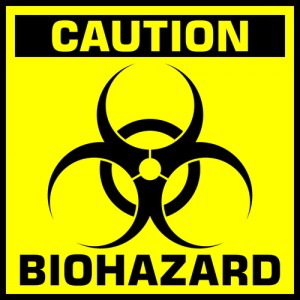Yesterday, a unanimous panel of New Jersey’s intermediate level appellate court rejected policyholder arguments that even though flood was excluded, the proximate cause of their Superstorm Sandy loss was the non-excluded peril of damage from “unhealthy water-borne substances” left behind by the receding water. In Riccio v. Allstate N.J. Ins. Co., 2015 WL 6181466, 2015 N.J. Super. LEXIS 2417 (N.J. App., Oct. 22, 2015), the judges recognized that to hold otherwise would render the flood exclusions in homeowner’s policies meaningless.
 The insureds owned a home in Little Silver that was inundated by 20”-36” of water when a creek behind their property overflowed its banks during Superstorm Sandy on October 29, 2012. They initially attempted to clean the house themselves, removing the carpeting and hiring a certified cleaning and restoration company. When the president of the clean-up concern visited the site, however, he told everyone to stop what they were doing, saying that the water was “very unhealthy and dangerous.” He later opined that it was Category 3 water – a substance that is “highly contaminated and could cause death or serious illness if consumed by humans.”
The insureds owned a home in Little Silver that was inundated by 20”-36” of water when a creek behind their property overflowed its banks during Superstorm Sandy on October 29, 2012. They initially attempted to clean the house themselves, removing the carpeting and hiring a certified cleaning and restoration company. When the president of the clean-up concern visited the site, however, he told everyone to stop what they were doing, saying that the water was “very unhealthy and dangerous.” He later opined that it was Category 3 water – a substance that is “highly contaminated and could cause death or serious illness if consumed by humans.”
The dwelling was located in an area designated as a “Special Flood Hazard Area” by the National Flood Insurance Program, and the policyholders had maintained flood coverage with the NFIP until 2008 when they paid off their mortgage and were no longer obligated to carry it. They made claim under their homeowner’s policy, but the insurer denied after tendering a check for $975.22 for covered food spoilage and wind damage. The contract of insurance excluded loss by:
Flood, including, but not limited to, surface water, waves, tidal water or overflow of any body of water, or spray from any of these, whether or not driven by wind.
* * *
Water or any other substance on or below the surface of the ground, regardless of its source. This includes water or any other substance which exerts pressure on, or flows, seeps or leaks through any part of the residence premises.
Flood was defined, in pertinent part, as “a general and temporary condition of partial or complete inundation of normally dry land area from . . . [t]he overflow of inland or tidal waters[.]”
The insureds put the matter in suit, alleging that while their loss was “initiated” by the excluded peril of flood, the last event that caused the damage and thereby constituted the predominant cause of loss was “unhealthy water-borne substances, debris and materials.” The trial judge rejected that argument and granted the carrier’s motion for summary judgment, saying:
It is within the ken of the average lay person that flood water that encroaches upon the land carries with it any number of contaminants, whether it be ground matter, such as dirt, sand or vegetation, or potentially hazardous substances such as pesticides, bacteria, petroleum products, animal feces, or other potentially hazardous water borne contaminants.
* * *
The Court finds that the term “property loss caused by or consisting of flood damage” includes not only damage caused by water such as the saturation of sheetrock or the displacement of a house’s foundation, but damage caused by organisms or other particulate matter that flows into the insured’s property as part of the water and is left behind when the water recedes.
On October 22nd, the Appellate Division of New Jersey’s Superior Court affirmed in a per curiam opinion. On appeal, the plaintiffs relied largely on Johnson v. Allstate Ins. Co., 845 F.Supp.2d 1170 (W.D.Wash. 2012), a case in which a waterfront home on Puget Sound had been severely damaged by logs and other water-borne debris during a storm. The Johnson court held that logs and waves were “distinct perils” and that the loss was not excluded as a result
After noting that a federal district court opinion in Washington state had no precedential value in New Jersey, the panel proceeded to distinguish Johnson, saying that “the phenomenon of waves carrying logs propelled by high winds” was a far cry for what happened during Superstorm Sandy on the Jersey shore. In the words of the opinion:
Under the plain terms of the Allstate policy, the damages caused by a flood are excluded. We . . . agree with Judge Perri that property loss caused by flood damage includes not only the damage caused by the water, but must also include the damage caused by toxic substances carried by the flood waters and left behind after that water recedes. To hold otherwise would provide coverage to homeowners who eschew the high cost of flood insurance and maintain only homeowners policies, and would render the flood exclusion in those policies meaningless.
The Court also observed that the flood exclusion barred coverage for water or any other substances regardless of their source, and it rejected the policyholders’ contentions that the exclusion itself was ambiguous.

